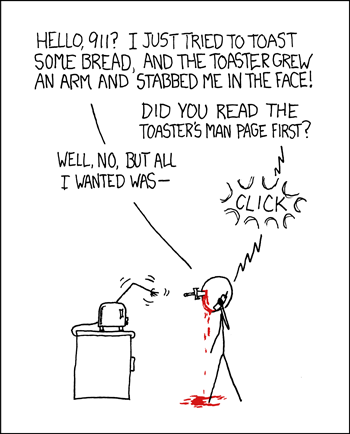There is No Such Thing as a Dumb Question
24 Jan 2024
No Such Thing as a Stupid Question
Or at least, that’s what most of our teachers proclaimed as we grew up. This still holds true to some extent, everyone starts somewhere; questions and collaborative work are encouraged as useful learning experiences when utilized correctly. However, as people gain familiarity, enter the workforce and find themselves surrounded by professionals and specialized fields, we shouldn’t still be asking questions akin to a clueless grade-schooler, just looking for a quick fix to their problem. There should at least be some level of formality and courtesy involved.
Most of our teachers in stating such wanted to encourage questions from students, encourage engagement. Though when they do get a supposedly “not dumb” dumb question, there is a very distinct way of answering they tend to have, often paired with an “if you were paying attention…”. In their defense, sometimes, the inquiry in question is something that is easily answerable if the student had done a little digging on their own or put in a little effort to think it through. If teachers, those who are getting paid to teach us and answer our questions get annoyed at this, imagine those who volunteer their time to helping others, solving issues people may have, only to have their feed drowned out by those people who throw out these same types of “not dumb” dumb questions.
How To Make a Good Question?
It’s good to note that most of those people don’t intentionally mean to make such questionable questions, rather, they may not know better. Or they may not know the formatting, or what makes a question easily understandable and interesting to others. In following Eric Raymond’s “How to Ask Questions the Smart Way”, we can take a look at some general guidelines to follow, things that will garner more attention and allow you and others to learn more for your time. There are a plethora of examples of good and bad questions; just off StackOverflow there is a good 20 million to choose from, and they can serve as good references for your own to-be-posted questions.
This constitutes a good example, of a bad example. From its subject headline, “Dropdown Menu on Javascript” there isn’t really much to take from it. There are no concise details on what the actual question is, rather just stating a functionality in a language. You might even think it’s a documentation on the dropdown menu from just reading the headline. The actual details of the post are just as short, with heavy grammatical and spelling errors, followed by a long wall of code and bluntly asking for someone to tell them what to do. As expected, the answers given are snarky, telling the user to do a simple Google search, along with comments that the details provided are nothing short of mediocre, and 6 downvotes. This is surprisingly still a relatively good turnout; most people would not have given this post the light of day.
As a counter to the last example, this post shows that just by following proper question-making guidelines, even a somewhat silly question can draw lots of traction and answers. The subject headline is clear, “Why does HTML think “chucknorris” is a color?”, specifying the language and what is going on. The user also provides examples of the instances, letting those who stumble across the post to try for themselves. The user demonstrates that they have gone and tested it on multiple platforms, indicating that they have a want to actually learn and understand what is going on, not just a quick answer to move on. It is an interesting question and gets answers likely because others and the responders also wanted an answer and worked through it further. That is why despite being posted 12 years ago, even now the thread is still active with a couple thousand upvotes. A good question like this can also stimulate other discoveries, as people have revealed that not just “chucknorris” is interpreted as a color by HTML, but also “whippersnappers”, “LuckyCharms”, and “GangnamStyle”. One reply even uploaded a whole color dictionary that expanded on this phenomenon!
The way you phrase questions very heavily determines the answers you get back. The examples provided are just two of the many out there. If at some point you run into an issue that you just can’t seem to get to the bottom of, let these two examples remind you. What effort you put into making the question, providing details and demonstrating your desire to learn, is the same amount of effort others will put into you.